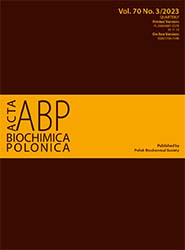Bionics investigation of blood 25-hydroxyvitamin D in the interpretable biomechanics diagnosis of childhood anemia
Abstract
Vitamin D deficiency (VDD) causes a wide range of health problems, including anemia in infants. If not treated promptly, it may create serious issues for infants with long-term impacts. Therefore, a satisfactory solution to this problem is required. This investigation was to explore the correlation between the blood 25-hydroxyvitamin D (25(OH)D) levels and childhood anemia. In this investigation, a cross-sectional examination was performed on 2,942 babies ranging in age from 2 to 36 months and classified into three cohorts: VDD (Vitamin D deficiency), VDI (Vitamin D insufficiency), and VDS (Vitamin D sufficiency). Multiple-variables and multinomially-related logistic regressions for examining the anemia status-vitamin D (Vit-D) relationship of the baseline as the interpretable visual quality models were examined. The median serum 25(OH)D level in 2,942 infants was 24.72±4.26 ng/l, with 661 cases (22.5%) of VDD and 1710 cases of deficiency (58.1%), and a noticeable seasonal variation (p<0.05). Anemia was present in 28.5% of the VDD group compared with 3.3% in vit-D sufficient infants (p<0.0001). Lower levels of 25(OH)D were found to be associated with an increased risk of anemia in a multiple-variable regression analysis. In healthy children, low 25(OH)D levels were associated with increased risk of anemia. Biologically inspired, primary care physicians should assess Vit-D levels and place a greater emphasis on adequate supplementation for deficiency prevention.
Copyright (c) 2023 Lechi Zhang, Aijie Huang, Jingye Cai, Jiangting Hou, Hongyan Deng, Chenxiao Liu

This work is licensed under a Creative Commons Attribution 4.0 International License.
Acta Biochimica Polonica is an OpenAccess quarterly and publishes four issues a year. All contents are distributed under the Creative Commons Attribution-ShareAlike 4.0 International (CC BY 4.0) license. Everybody may use the content following terms: Attribution — You must give appropriate credit, provide a link to the license, and indicate if changes were made. You may do so in any reasonable manner, but not in any way that suggests the licensor endorses you or your use.
Copyright for all published papers © stays with the authors.
Copyright for the journal: © Polish Biochemical Society.


